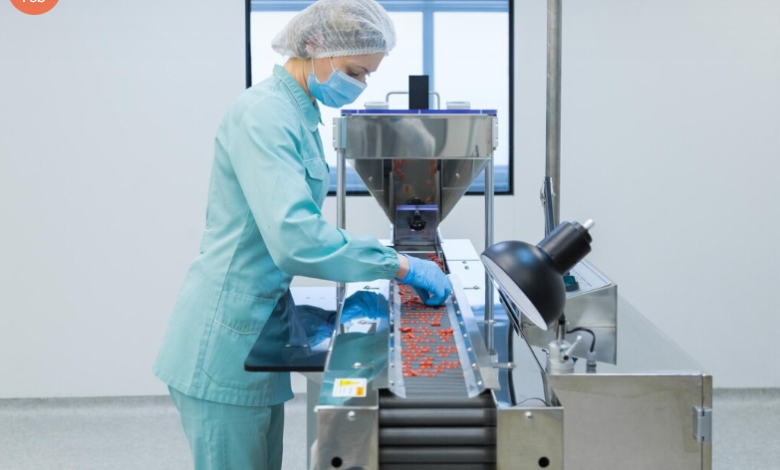Large Scale Protein Purification in Bioprocess Pipelines

When you’re scaling your protein purification workflows from bench-top experiments to full-scale bioprocessing, the transition is not just about increasing volumes. It’s about maintaining consistency, ensuring purity, and meeting rigorous regulatory and quality standards. Whether you’re manufacturing therapeutic proteins, enzymes, or monoclonal antibodies, you need to engineer a bioprocess pipeline that handles complexity without compromising performance.
Understanding Your End Goal
Before you even begin optimizing for scale, clarify your ultimate purpose. Are you producing a clinical-grade therapeutic? Are you working on industrial enzymes for downstream chemical applications? Your answer will influence everything—from the choice of expression system and cell line to the selection of chromatographic resins and buffer systems. You’ll find that different proteins require dramatically different approaches, especially as you scale purification.
Expression System Considerations
Your expression system—bacterial, yeast, insect, or mammalian—will define the downstream purification strategy. For example, bacterial systems may be easier and cheaper to scale but often result in inclusion bodies requiring additional refolding steps. Mammalian systems yield properly folded proteins with correct post-translational modifications but are more sensitive to culture conditions.
As you scale, remember that upstream decisions directly affect downstream purification. When you’re dealing with hundreds of liters of culture, inconsistencies in yield or protein folding at the small scale become magnified at production scale.
Harvesting and Clarification
Once your biomass reaches desired density, harvesting becomes the next critical step. Centrifugation or depth filtration are the most common techniques used. However, in large scale, you need to optimize for shear sensitivity and throughput. The goal is to remove cells or debris while preserving the native structure of your protein.
You should consider disposable filtration systems to eliminate cross-contamination risks, especially when working in multi-product facilities. The clarification process should be designed to accommodate batch-to-batch variability and integrate seamlessly with your capture chromatography system.
Capture Chromatography at Scale
The capture step is where you isolate your protein of interest from the complex biological soup. Affinity chromatography is a go-to method here, particularly using Protein A, Protein G, or metal affinity systems like Ni-NTA for His-tagged proteins.
For monoclonal antibodies, Protein A chromatography remains the gold standard. You’ll want to use a resin with high dynamic binding capacity, chemical resistance, and reusability. It’s also critical to design your column size based on breakthrough curves and pressure limits to avoid channeling or resin damage.
To understand how to streamline your purification strategy with the best resins and flow paths, you can look at this web-sitefor industry-specific solutions.
Intermediate Purification and Polishing Steps
After capture, impurities such as host cell proteins, nucleic acids, and endotoxins must be removed. Ion exchange chromatography (IEX), hydrophobic interaction chromatography (HIC), and size exclusion chromatography (SEC) are commonly used in this stage. The goal here is to maximize purity without sacrificing yield.
Your purification train may include multiple columns connected in series or run sequentially, depending on your process economics and required purity profile. Automation and inline dilution systems can help streamline buffer preparation and transitions between steps, minimizing human error and increasing reproducibility.
Buffer Preparation and Exchange
Buffers play an underrated yet vital role in large scale purification. The challenge is not only preparing large volumes but maintaining the accuracy of pH, conductivity, and osmolarity. It’s advisable to implement inline buffer dilution systems and single-use mixers to speed up transitions and reduce cross-contamination.
Diafiltration and ultrafiltration also become crucial, especially for buffer exchange and concentration steps. Choosing the right membrane cut-off and flow rate ensures protein integrity is maintained while achieving volume reduction or buffer change efficiently.
Scalability of Chromatography Resins
When you’re scaling up, not all chromatography resins perform the same. Laboratory-scale resins may not be robust enough for industrial throughput or cleaning cycles. Consider parameters like pressure-flow characteristics, lifetime cycles, and column packing properties. Using scalable formats such as pre-packed columns or resin in defined particle size ranges ensures process reproducibility.
A common error is underestimating the pressure limitations of your chromatography system at scale. Ensure that your column housing and pump systems are compatible with high-viscosity loads and that flow distribution remains even.
Automation in Bioprocess Pipelines
Manual handling becomes a bottleneck and a source of variability in large scale. Adopting automation platforms—especially those compatible with process analytical technology (PAT)—can bring real-time monitoring and process control into your workflow. This minimizes the chances of deviations and ensures consistent product quality.
Whether it’s automating your chromatography skids, integrating sensors for conductivity and UV absorbance, or programming your tangential flow filtration (TFF) unit, the shift to automation is crucial. These systems are also vital for compiling batch records for regulatory filings.
Maintaining Regulatory Compliance
As you scale, you must meet cGMP guidelines, which govern equipment, documentation, validation, and personnel. Your purification suite should be designed with cleanroom classifications in mind, and every step should be traceable.
Ensure that your chromatography resins, filtration devices, and buffer systems are validated for biopharmaceutical use. Cleaning validation, hold-time studies, and leachable/extractable profiles are non-negotiable.
You can learn more here about how regulatory frameworks impact protein purification workflows and what systems are most aligned with industry compliance.
Addressing Aggregates and Degradation Products
Protein aggregation can increase as volumes scale, often due to temperature shifts, shear forces, or buffer incompatibility. Polishing steps such as SEC or mixed-mode chromatography can help remove these aggregates, but prevention is preferable. Pay attention to the freeze-thaw cycles and mechanical agitation during transfer steps.
You’ll also need to assess and monitor degradation products through analytical tools such as HPLC, SDS-PAGE, and capillary electrophoresis. These data support lot-release specifications and help refine your process over time.
Protein Stability and Storage
Once your protein is purified, stability becomes your next priority. For large-scale operations, the method of storage—whether frozen, lyophilized, or in solution—must be compatible with your formulation and shelf-life requirements. Bulk storage tanks, cold rooms, and single-use biocontainers should be validated for compatibility and integrity.
Stability studies under ICH guidelines help determine your product’s expiration and shipping conditions. Ensure that every aspect from vialing to labeling is part of your standard operating procedures (SOPs).
Tech Transfer and Scale Validation
Scaling from pilot to manufacturing isn’t just a matter of using larger tanks and columns. Tech transfer involves detailed documentation, process validation, and training. Whether you’re outsourcing to a CMO or handling it in-house, consistency is key.
Run small-scale models using scale-down validation techniques to mimic large-scale behavior. This allows you to foresee issues and adjust process parameters before full-scale batches are executed.
Final Thoughts
Large scale protein purification in bioprocess pipelines is a high-stakes balancing act. You’re not just purifying molecules; you’re building robust, reproducible, and regulatory-compliant systems. From the choice of expression system and capture resin to final fill and finish, every decision impacts the integrity and yield of your final product.
Approach your scale-up strategy methodically, using a data-driven mindset. Leverage automation, invest in high-quality resins, and always think three steps ahead in your process development. Doing so ensures that your pipeline is not only productive but also future-proof in a rapidly evolving bioprocessing landscape.




